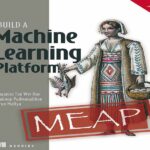- عنوان کتاب: A Primer for Mathematical Analysis
- نویسنده: David Borthwick
- حوزه: تحلیل ریاضی
- سال انتشار: 2025
- تعداد صفحه: 104
- زبان اصلی: انگلیسی
- نوع فایل: pdf
- حجم فایل: 0.93 مگابایت
دورههای مقدماتی تحلیل در سطح تحصیلات تکمیلی معمولاً به عنوان پیشنیاز، گذراندن یک دوره کارشناسی در تحلیل حقیقی یا حساب دیفرانسیل و انتگرال پیشرفته را الزامی میدانند. با این حال، حتی دانشجویانی که پیشنیازهای مناسب را گذراندهاند، اغلب احساس آمادگی ناکافی میکنند. محتوای دورههای قبلی ممکن است دقیقاً با انتظارات تحلیل در سطح تحصیلات تکمیلی مطابقت نداشته باشد. علاوه بر این، مطالب چالشبرانگیز است و عدم حفظ مطالب یک مسئله رایج است. در نهایت، حتی دانشجویانی که درک کاملی از مفاهیم دارند، ممکن است هنوز در نوشتن اثباتهای تحلیلی مهارت نداشته باشند. هدف این کتاب کمک به دانشجویان برای پر کردن این شکافها است. در تجربه من از تدریس دورههای سال اول تحصیلات تکمیلی در مورد تحلیل حقیقی یا مختلط، رایجترین مسئله در آمادهسازی دانشجویان مربوط به نظریه فضای متریک است. اکثر دورههای تحلیل کارشناسی شامل مقدمهای بر این موضوع هستند و بنابراین مفاهیم کلیدی معمولاً آشنا هستند. اما این سطح از آشنایی اغلب ناکافی از آب در میآید. توپولوژی فضای متریک زبان اساسی تحلیل ریاضی است و برای موفقیت در سطح تحصیلات تکمیلی، دانشجویان باید در این زبان مهارت پیدا کنند. این کتاب در ابتدا مجموعهای از یادداشتهای مقدماتی بود که من برای آن دورههای تحصیلات تکمیلی نوشتم تا به مرور مفاهیم اصلی کمک کند و تمرینهای اضافی در اثباتنویسی تحلیلی ارائه دهد. متن از ابتدا بیشتر مطالب استاندارد مقدماتی تحلیل را پوشش میدهد و با کامل بودن اعداد حقیقی شروع میشود. با این حال، تمرکز بر ابزارها و مفاهیمی است که انتظار دارم بیشترین مرور را داشته باشند و نحوه برخورد با موضوعات خاص نسبتاً ساده است. به عنوان مثال، حساب دیفرانسیل و انتگرال تک متغیره فقط به طور خلاصه در فصل آخر پوشش داده شده است، به عنوان وسیلهای برای نشان دادن چگونگی کاربرد مفاهیم و ابزارهای خاص فضای متریک در این زمینه. این کتاب برای خودآموزی در نظر گرفته شده است و تمرینهایی به طور کامل در متن گنجانده شده است. این تمرینها اغلب برای توسعه نتایج مهمی استفاده میشوند که به عنوان پایهای برای اثباتها و تمرینهای بعدی عمل میکنند. مجموعهای کامل از راهحلها در انتهای کتاب ارائه شده است، اما من اکیداً توصیه میکنم که خوانندگان وقت بگذارند و با دقت در مورد این مسائل فکر کنند و قبل از استفاده از راهحلها، اثباتهای خود را بنویسند. صرفاً خواندن اثباتها یا جستجوی راهحلها، کمک کمی به درک و حفظ طولانی مدت میکند. مهارت در زبان تحلیل از طریق تعامل فعال، با تفکر در مورد مفاهیم و کار با استراتژیهای اثبات، ایجاد میشود.
Introductory graduate-level analysis courses usually require an undergraduate course in real analysis or advanced calculus as a prerequisite. However, even students who have taken the appropriate prerequisites often feel inadequately prepared. The contents of the prior courses may not line up precisely with the expectations for analysis at a graduate level. Moreover, the material is challenging and lack of retention is a common issue. Finally, even students with a firm grasp on the concepts may not yet be adept at writing analysis proofs. The goal of this book is to help students bridge these gaps. In my experience of teaching first-year graduate courses on real or complex analysis, the most common issue in student preparation has to do with metric space theory. Most undergraduate analysis courses include an introduction to this topic, and so the key concepts are usually familiar. But that level of exposure often turns out to be insufficient. Metric space topology is the underlying language of mathematical analysis, and to succeed at the graduate level students need to become proficient in this language. This book originated as a set of introductory notes that I wrote for those graduate courses, to help review the core concepts and provide additional practice in analysis proof-writing. The text covers most of the standard introductory analysis material from the beginning, starting with the completeness of the real numbers. However, the focus is placed on tools and concepts that I expect to need the most review, and the treatment of certain topics is rather streamlined. For example, single-variable calculus is covered only briefly in the final chapter, as a means to show off how certain metric space concepts and tools apply to this context. The book is intended for self-study, with exercises fully incorporated into the text. These exercises are often used to develop important results which serve as the basis for subsequent proofs and exercises. A complete set of solutions is provided at the end of the book, but I strongly recommended that readers take the time to think through these problems carefully and write out their own proofs before making use of the solutions. Simply reading proofs or looking up solutions contributes little to long-term understanding and retention. Proficiency in the language of analysis is built through active engagement, by puzzling over the concepts and working through strategies for proofs.
این کتاب را میتوانید از لینک زیر بصورت رایگان دانلود کنید:
Download: A Primer for Mathematical Analysis




































نظرات کاربران